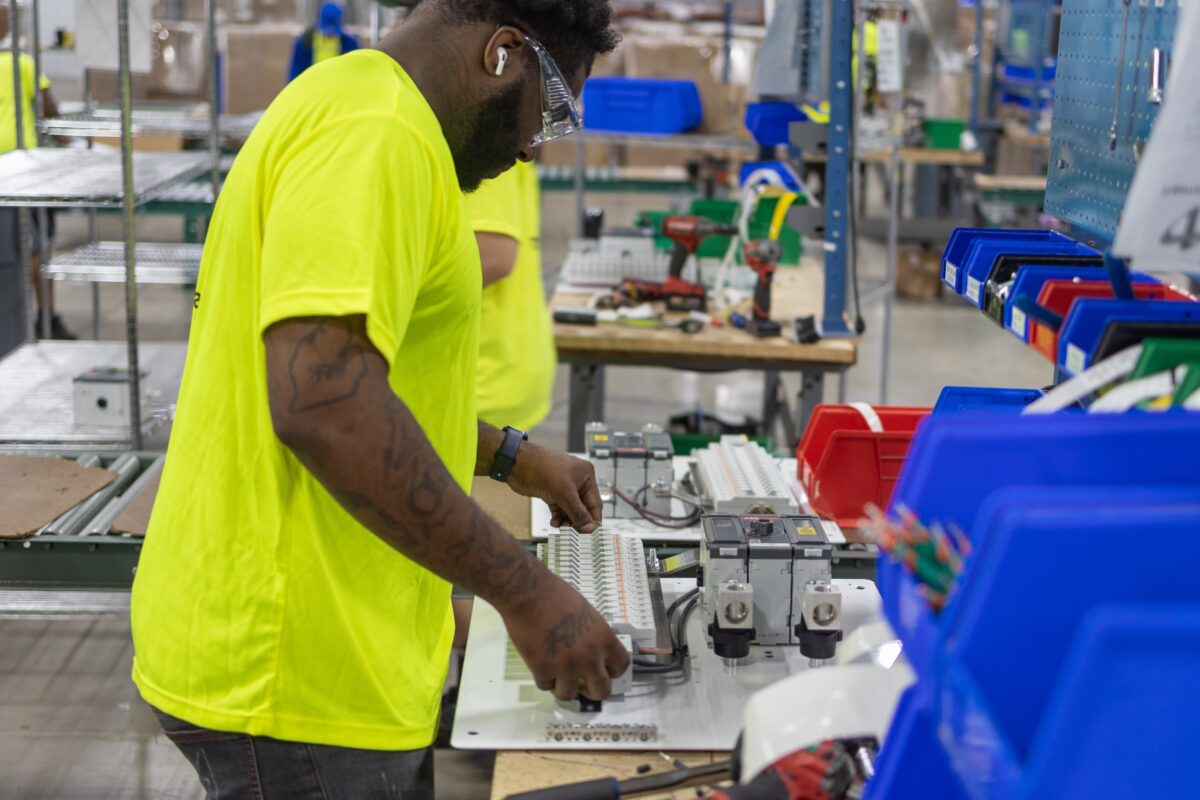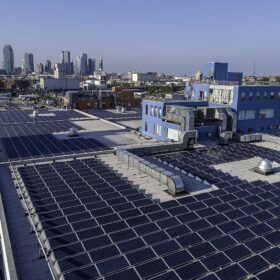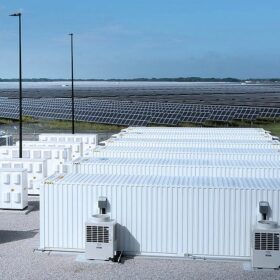How do we keep “balance of systems” supply chains from becoming “imbalanced”? It’s a question we continually ask ourselves at Terrasmart. Electrical Balance of Systems (eBOS) hold utility-scale solar projects together, and a single component delay can create a domino effect that impacts the entire development. Here’s a deeper look at the steps we take on behalf of our customers to prevent delays and optimize supply chain efficiencies.
As a leading manufacturer of eBOS for the solar industry, we are known for our best-in-class lead times, seamless onsite execution, and flexible solutions that allow us to tackle unique and challenging sites without sacrificing quality or timelines.
With a foundation of solid in-house operations, we turn to the external challenges inherent in the supply chain, and develop workarounds, preventative measures, and proactive solutions.
At Terrasmart, while some external forces are out of our direct control, we have processes in place to mitigate the impacts of surprises. Since change orders can be a headache for everyone involved, we partner with customers upfront to help lay out realistic timelines and accommodate potential issues into schedules to prevent late-stage disruptions.
Solutions for inventory shortages
Even as they adopt increasingly advanced technology to manage the supply chain, incorporating AI and machine learning, companies are still confronted by significant issues. Tariffs, component shortages, and manufacturing delays have impacted the supply chain across the globe. For example, AC combiner boxes are requiring 14 to 16 week lead times – a reality that needs to be addressed in project planning and schedules.
With these potential challenges in mind, we’ve identified and developed initiatives that solve for shortages. Our top three component suppliers now maintain inventory buffers. To create even more shortage insurance, we advocated to have on-site stock at their primary headquarters to support faster fulfillment. This safety stock implementation has greatly reduced production delays. Collaborating with suppliers to seek out and support mutually beneficial solutions is one way we work behind the scenes to benefit our customers and partners.
Lean manufacturing and streamlined communication
Even when things are running smoothly, our culture of continuous improvement means we never rest on our operational laurels. We’ve created a new forecasting model that offers 8 to 12 weeks of visibility, allows for proactive capacity and procurement planning, and provides even more transparency to all stakeholders in a project.
Our plant staff, led by plant manager Jeremy Hartman, has implemented lean manufacturing solutions that shave total time off a schedule. These lean principles have led to a smoother production flow and better resource utilization. As a result, our lead time for standard DC Combiners and DC Disconnects has shrunk to 6-8 weeks from purchase order.
Communication is always a key element of efficiency. Our plant team has updated various standard operating procedures to reduce training time from a few weeks to a few days, without reducing training quality. To maintain open communications and reinforce the training, the team holds daily production meetings and weekly scheduling reviews. Collaboration like this, across teams, prevents bottlenecks and ensures seamless operations. More specifically, cycle count accuracy improved to 98–100% due to better inventory controls, material flow in specialized areas is fully streamlined, and our supply chain resilience is even stronger, despite global uncertainty.
Effective collaboration
Through all of our internal initiatives and external efforts, teamwork and shared accountability drove success. There are no teams in Terrasmart that work in isolation. From plant management to construction to procurement, transparency and collaboration are a cornerstone of our company. We extend this philosophy of open communication to our customers, and know that transparency builds trust with customers and stakeholders.
“We’re constantly improving together,” explains Ebony Matlock, Supply Chain Manager, Terrasmart. “The comfort zone is an amazing place to be, but nothing grows there. That’s one thing I talk about with my team – I try to push them out of their comfort zone,”
Ebony Matlock, Supply Chain Manager at Terrasmart, has seen this collaboration firsthand. “One day, out of the blue, one of our team members said, ‘Hey, I’ve been here for over four years, and this cage has always looked the same.’ The cage is the storage location for the majority of our purchased parts and plays a key role in eBOS assembly on the production floor. The team came together to rearrange the racking and renamed it the ‘Materials Crib.’ The new layout not only looks great but increases productivity.”
“This is just one example of how teamwork makes a dream work, and, just because we’ve done something one way doesn’t mean it’s written in stone. We’re constantly improving together,” explains Ebony. “The comfort zone is an amazing place to be, but nothing grows there. That’s one thing I talk about with my team – I try to push them out of their comfort zone.”
Terrasmart’s eBOS homerun solutions already provide industry-leading flexibility. Since they can be easily customized to a site’s terrain, configuration, or wire management option, we’re able to adapt our solutions to challenging supply chain situations as well.
This versatility expands project capacity, which in turn allows for more supply chain resilience than systems with limited design or expansion options. If a project grows or evolves, our eBOS solutions can grow and evolve in tandem with the updated project requirements.
Blueprint for success
Terrasmart customers come to us for collaborative partnership and on-time, on-budget delivery, and we take this trust seriously.
By aligning lean thinking, forecasting, and cross-functional collaboration, we’ve created an internal blueprint for success, and through proactive industry advocacy for supply chain solutions, we optimize stability across each link in the chain for our customers’ benefit.
Ultimately, supply chain resiliency is not just about overcoming obstacles—it’s about innovating through them.
The views and opinions expressed in this article are the author’s own, and do not necessarily reflect those held by pv magazine.
This content is protected by copyright and may not be reused. If you want to cooperate with us and would like to reuse some of our content, please contact: editors@pv-magazine.com.








By submitting this form you agree to pv magazine using your data for the purposes of publishing your comment.
Your personal data will only be disclosed or otherwise transmitted to third parties for the purposes of spam filtering or if this is necessary for technical maintenance of the website. Any other transfer to third parties will not take place unless this is justified on the basis of applicable data protection regulations or if pv magazine is legally obliged to do so.
You may revoke this consent at any time with effect for the future, in which case your personal data will be deleted immediately. Otherwise, your data will be deleted if pv magazine has processed your request or the purpose of data storage is fulfilled.
Further information on data privacy can be found in our Data Protection Policy.